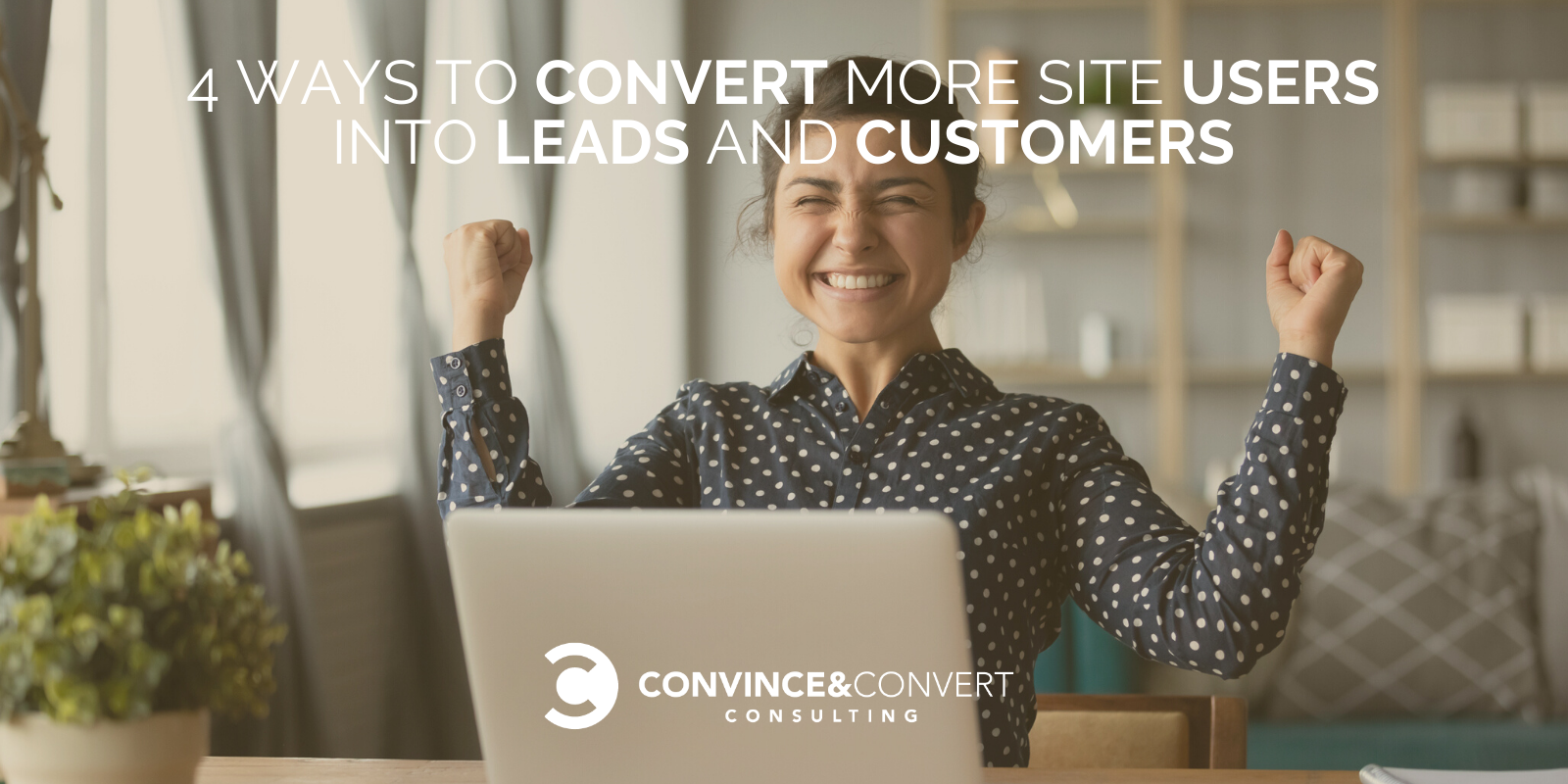Would you like more of your site users to convert into buyers or customers?
New reports reveal that it is getting more and more difficult as buyers’ journeys are getting more and more complicated:
- More than 50% of consumers buy online because they can easily compare prices (Source: Oberlo)
- 63% of shoppers who ask for information about products won’t make a purchase for at least 3 months. (Source: Marketing Donut)
- There are now 6-10 people involved in a B2B purchasing decision. (Source: Gartner)
And let’s not forget an anecdotal car buying journey that turned into 900+ digital interactions that included Google searches, video and image viewing, price comparisons, getting in touch with sales reps, and more.

Buying journeys are no longer linear. In fact, they are more like “journeys” these days with lots of “touchpoints” (i.e. site visits, form fills, social media interactions) as well as random distractions and interruptions.
If you were to visualize a buyer’s journey, here’s a great illustration from Gartner:

While the discovery phase (i.e. when your target customers are still researching their options) may often be out of your control, is there a way to shorten your site visitors’ buying journeys once they land on one of your pages?
It’s a huge task and consists of many pieces — none of which is a magic bullet. Here’s an overview of some of the more effective tactics to get more of your site users to complete their journey on your site instead of leaving to continue it elsewhere.
1. First Things First: Make Your Key Pages Fly
In today’s fast-paced web environment, users feel like moving on almost the second they land on a particular page.
So keeping your site users interacting with your site and preventing them from leaving is by far the most important step here.
And one of the biggest elements here is to ensure your page loads fast. As the web grows, so do customers’ expectations regarding their web experience.
Based on Google’ report, more than 50% of people will leave a site if a mobile page takes more than three seconds to load. That is, 1-2-3 … boom, you lost more than 50% of your traffic.
On the bright side, improving your load time by 0.1s can boost conversion rates by 8%.
This is huge.
Keep an eye on your page load time, especially when it comes to important pages that are supposed to turn site visitors into customers, like product pages and the checkout page. This includes making sure your code is clean, your images are optimized and your site is mobile optimized.
2. Get Them to Act by Using Personalized Marketing
Marketing personalization has long proved to be an effective way to keep web users on a specific site, as well as improve the page conversions. Yet, not many brands are still taking the full advantage of the tactic.
The truth is, AI-powered personalization doesn’t have to be too complicated or expensive. There are a few powerful solutions delivering AI-driven technologies to ecommerce solutions.
Dialogue is an ecommerce personalization platform that offers a variety of tools and features that prompt shoppers to make purchasing decisions based on their intent and desire and convert them into buyers.
Instead of recommending similar (or even matching) products, the platform delivers recommendations based on each unique customer’s journey making them almost irresistible.

3. Eliminate Barriers
This one may seem obvious but lots of those barriers still exist.
In fact, many of those barriers exist for valid marketing reasons. For example, a company may require customers to “request demo” before they are even able to buy a product. And there may be a valid reason there: They want to match the right product with the right customer.
Another example is that lots of companies require a customer to create an account in order to complete a purchase. This is usually done for the purpose of collecting customers’ data and personalizing their experience going forward.
Yet, valid marketing reasons don’t mean you don’t need to test otherwise.
Now that most companies in just about any niche are dealing with an increased competition, none of us can rely on tactics that seem to have been working for years.
There’s always room for testing new ways to do sales and marketing. Here are a few ideas on how you can shorten a buyer’s journey by removing barriers:
- Consider limiting your customers’ options. Sometimes too much choice overcomplicated buying journeys forcing them to think, research and ultimately postpone making a decision. If there’s a way to eliminate your plans or product suggestions, consider testing it out.
- Instead of forcing your customers to “Add to cart” and then go from page to page to make a purchase, create a “Buy now” button that offers a distraction-free purchase. WooCommerce offers a “Buy now” button that replaces “Add to cart” and allows customers to instantly buy a selected product without even leaving the product page.
4. Curate & Publicize Social Proof
Don’t underestimate the power of social proof (i.e. reviews and testimonials). For nearly 9 in 10 consumers, an online review is as important as a personal recommendation.
Ninety percent of shoppers read online reviews before visiting a business.
Put simply, unless you display social proof on your site, 90% of your site users may leave (or interrupt their journeys across your site) to find it elsewhere.
It is a good idea to experiment with different types and formats of social proof. It can be in the form tweeted testimonials, video reviews, or curated Instagram demonstrations:

”How did they wear it?” Instagram updates can be powerful on-site social proof
Another useful idea is to turn your testimonials into videos to be able to recycle them as Youtube assets as well as blog content. This can be easily done with tools like InVideo that allow you to create video slideshows easily:

Reuse and publicise social proof by turning it into videos
Here’s also a huge list of all possible ways to design and place your social proof on your site to give you some ideas.
Test and Then Test Some More!
Like with just about any marketing strategy, don’t implement any of these tactics without running a test.
Finteza offers an easy way to A/B test anything on your site without the need to invest in expensive software.
For WordPress, here’s an easy guide on how to split-test using plugins. Finally, here’s a handy checklist on how to A/B test and how to make the most of it.
Conclusion
There may be many more ways to shorten your customers’ buying journeys. Yet, those four above are probably the most powerful ones, and they work in just about any niche. The good news is, all of the methods above will also make your site users’ lives easier, so you are likely to see more returning customers too! Good luck!
The post 4 Ways to Convert More Site Users into Leads and Customers: Examples, Tools and Tactics appeared first on Content Marketing Consulting and Social Media Strategy.



![Read more about the article What’s On The Line When Sales and Marketing Are Misaligned? [Research]](https://www.dimaservices.agency/wp-content/uploads/2021/12/Whats-On-The-Line-When-Sales-and-Marketing-Are-Misaligned-Research-1024x512-1-300x150.jpg)
